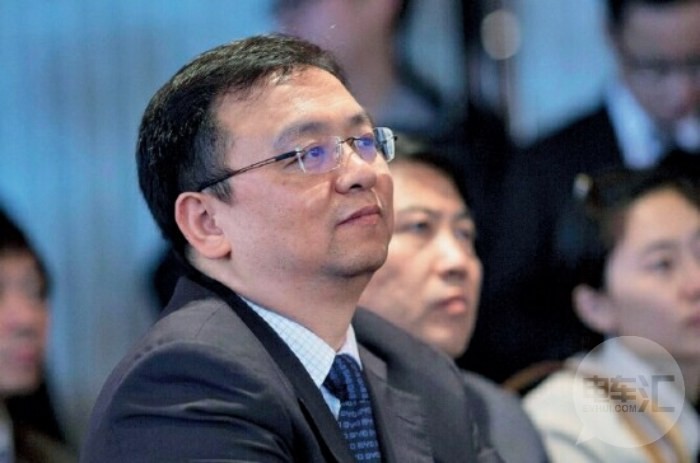… a big huge BYD energy storage project that is supposed to help Lancaster, California, become a net-zero-energy city. (Matthew found out about the 500 MW project on another podcast — storage capacity is unknown at this point. There are more details down in the show notes.)
You can listen and subscribe to our podcasts on
iTunes or
SoundCloud, you can listen by hitting the play button in the embedded player below, or you can
download the podcast and then listen.
Matthew puts together show notes, and we’ve decided to share those here now as well:
Story 1 – massive “battery peaker plant”
CleanTechnica has previously featured the city of Lancaster, California, highlighting how its Republican (!) Mayor convinced city council to pass a law in March 2013
requiring solar panelsto be installed for every newly-built single family home, as of January 1, 2014.
Lancaster – which enjoys 350 days of sunshine per year – is aiming to be a net-zero-electricity city by 2020, producing as much power within city limits as it consumes, each year. Home to BYD’s North American electric bus manufacturing facilities, it stands a good chance of reaching its stated goal of becoming the Alternative Energy Capital of the World.
And now its chances have gotten even better.
On a recent
conference call of West Coast mayors convened by the No New Fossil Fuel Infrastructure movement, Mayor Parris revealed that the city of Lancaster is working with BYD on a 500 MW energy storage system. A BYD representative confirmed this via email, taking care to emphasize that discussions were still in the early stages. (A big, big tip of the hat to Alex Smith’s
Radio Ecoshock podcast.)
This is a big, big deal.
Greentech Media had projected that
cumulative battery storage installations in the United States wouldn’t exceed a power rating of 500 MW until 2018 – and even then, just barely. Some upward revisions may be in order…!
If the project under discussion follows the typical pattern of 4 MWh energy storage per 1 MW power capacity (meaning that the batteries are sized to be able to discharge at 100% of rated power for four hours) that would mean this “battery peaker plant” would involve an enormous 2 GWh of BYD’s lithium-iron-phosphate batteries. That’s 2 million kWh, which is the equivalent of 200,000 Tesla Powerwalls, or 22,000 top-of-the-line Telsa Model S or X 90D’s.
It’s also
about double the 280 MW of battery storage that California utility SoCal Edison recently signed up for.
And this project’s size – on par with many legacy natural gas peakers – might make it a milestone we back on years from now, marking the beginning of our transition in earnest to battery peaker plants.
All in all, it’s fantastic news with which to ring in the New Year — and all of us at CleanTechnica(and the Cleantech Talk podcast too) can’t wait to bring you the daily latest and greatest as we accelerate into this epochal transition!
This battery peaker plant should work well for Lancaster, the per-capita solar capital of America. (A comparison from
three years ago had them at 130 Watts of solar panels installed per capita, way ahead of second-place San Jose which had 40 Watts. Given the growth of photovoltaics since then, their per-capita lead alone is probably 130 Watts by now…)
City Council had also come out swinging against a proposed
570 MW natural gas combined-cycle generator in the neighbouring city of Palmdale, so the city’s support for the battery peaker could be a case of proving their new proposal better. It would also help them manage any “duck curve” effects they might see from the solar infrastructure they continue to build throughout the city. As such, the battery peaker should greatly enhance the value of Lancaster’s solar electricity – the California Energy Storage Alliance estimates the value of storage-backed solar at
25 cents/kWh!
Story 2 – BYD vs. Tesla masterplan
The contrast in BYD and Tesla business plans makes for a great “pincer” movement on personal vehicles, with Tesla attacking from above (with unparalleled aspirational vehicles) and BYD striking from below (moving up the aspirational ladder).
BYD anticipated sales of 6,000 electric buses worldwide in 2015,
roughly on par with the number of buses (of all sorts) sold in the United States every year. Worldwide, there are probably about
half a million (500,000) buses in the world, with the number expected to increase as urban centers grow and become more dense.
It’s worth noting that they use lithium-iron-phosphate batteries (LiFePO4), instead of the lithium-nickel-manganese-cobalt-oxide type (“NMC” or LiNiMnCoO2) favoured by Tesla and many other electric vehicle makers. The advantage of NMC batteries is superior energy density, with the disadvantage being stability. Safety systems need to be designed around them to prevent freak instances of thermal runaway (fires) during recharging. Lithium-iron-phosphate batteries have roughly half the energy density, but are very stable, so need a lot less in the way of protective sub-systems. BYD clearly thinks the savings make their chemistry worthwhile.
A decent high-level overview of litihium-ion battery chemistries is
here.

